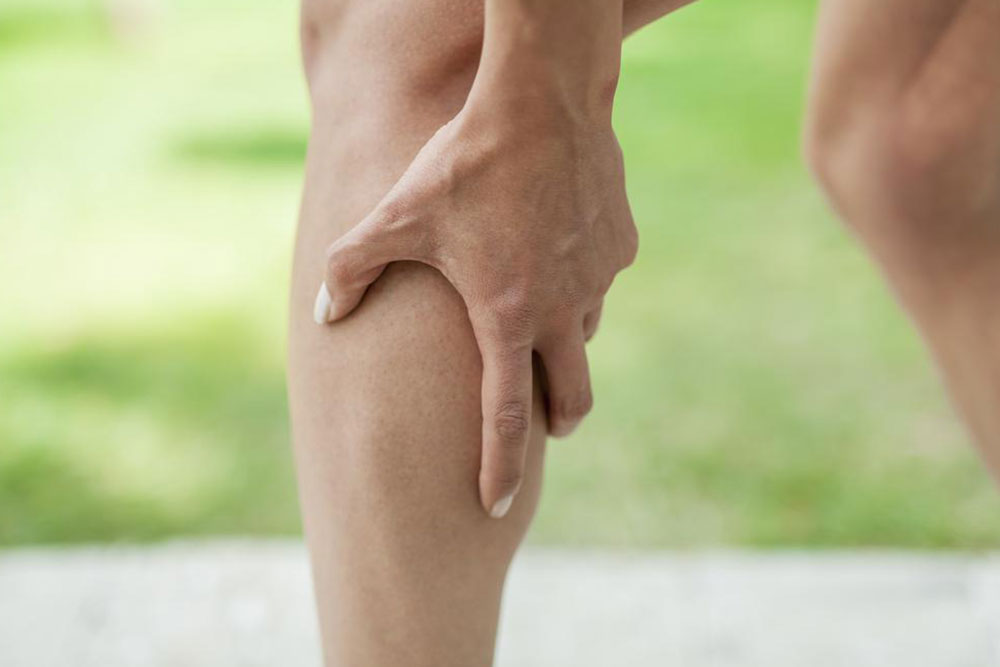10 Common Causes of Leg Cramps at Night
Leg cramps at night, also known as nocturnal leg cramps, are sudden, involuntary contractions of the muscles in the leg that usually occur during sleep. These cramps commonly affect the calf muscles and seem to “travel” up the leg towards the hamstring and thigh, and they can be quite painful. There is no one cause of nocturnal leg cramps, and causes can range from awkward sleeping positions to nutritional deficiencies.

Failing to stretch certain muscles
Our modern lifestyle is to blame for this. Although our ancestors spent most of their time squatting and walking, our contemporary lives have removed the need for such physical movements. We hardly do any activities that stretch the leg muscles and tendons. Moreover, our sedentary lifestyle decreases tendon and muscle length and reduces flexibility, which could lead to cramping.
Sleeping in awkward positions
Experts have also noticed that when you lie in bed with your face down, your foot is usually in a “plantar flexion” position. Your toe points are away from you, and this shortens calf muscles. If the foot stays in this position for a long time, even small movements of the feet could trigger a cramp. Consider sleeping on your side or in any other position that will keep your toes neutral.
Multiple sclerosis
Leg cramps at night may also be a symptom of multiple sclerosis (MS) which is a nervous system disorder. People who have MS can experience spasticity which may include different types of involuntary muscle twitches and spasms, including leg cramps. Note that spasticity feels like a mild tingling or tightness in the muscles or severe cramping.
Tough workouts
Vigorous exercise routines are related to different muscle cramps. Skeletal muscle overload and fatigue prompt muscle cramping in overworked muscle fibers. This problem often occurs among highly trained professional athletes. Though staying hydrated usually helps, there is no established method for preventing overuse cramps.
Osteoarthritis
Just as overexcited nerves could lead to overuse-related cramps, nerves that malfunction for other reasons can also lead to cramping. Osteoarthritis is a form of arthritis characterized by achy and stiff joints. However, people who have this ailment can experience leg cramps and muscles spasms too. Usually, the leg cramps are linked to osteoarthritis of the spine which may cause pinched nerves or nerve damage if the condition is severe.
Dehydration
Some studies have shown that dehydration leads to leg cramps at night. Moreover, there are clear seasonal patterns in the occurrence of muscle cramps. Higher numbers are reported in the summer while a lower number of cases are registered in the winter. This statistic shows that heat and fluid balance influence the development of cramps. Thirst can also promote an imbalance of electrolytes in the blood, which could trigger cramps.
Sitting or standing
Our muscles are designed to contract, move, and rest. So, each time you do anything out of the norm, like standing in a line for hours in an amusement park or sitting in a conference room all day, you may experience some leg cramps at night. Staying on your feet for long may lead to muscle fatigue, which can cause cramping. However, sitting too much is not good for your body either. Sitting for prolonged periods predisposes the muscles to malfunction, and the muscles fibers can become hyperactive. When this occurs, you may get a cramp.
To avoid getting leg cramps from standing, ensure that you sit before your muscles feel extremely tired. If you get cramps from sitting for a long time, ensure that you spend a couple of minutes walking around every hour or when you get a break.
Nutrient deficiency
Research has shown that an imbalance in the levels of magnesium, calcium, and potassium may play a role in cramping. These electrolytes help maintain the fluid balance in the muscles and blood, so if there is a deficiency, it may lead to cramping. However, these studies have shown inconsistent results. So, additional research is required to understand how these nutrients directly affect muscle cramps.
Diabetic peripheral neuropathy
When sugar levels in the blood are high, like in patients with diabetes type-2, it can cause damage to nerves in the leg, hands, and feet. This condition is known as diabetic peripheral neuropathy. The nerve damage leads to a feeling of tingling or numbness. However, it also produces muscles twitches or full-blown leg cramps if the nerves of the leg are not functioning well. When this condition occurs, diabetes treatment can assist in preventing further nerve damage.
Peripheral artery disease
If you spontaneously get leg cramps at night that are not caused by exercise, you should visit your doctor for a checkup. Conditions like peripheral artery disease (PAD) affect blood flow because cholesterol blocks the blood vessel in the legs. Eventually, PAD triggers muscle cramps since enough blood doesn’t get to the legs.
Make sure that you get a check-up from your doctor if you experience leg cramps for no reason, especially if it doesn’t go away with adequate stretching, hydration, and nutrition. Your doctor will be able to diagnose the condition and provide the right remedies for leg cramps at night.




